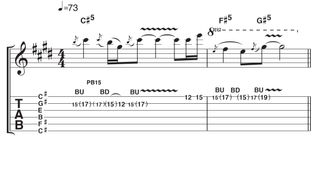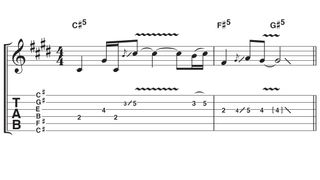Learn to solo over chord changes and improve your bending with these two Mark Tremonti guitar lessons
How to add more soul to your soloing with the Alter Bridge guitarist's advice

Alter Bridge's Mark Tremonti is a prolific musician but he's also a student of the guitar; constantly seeking to enhance and expand his abilities as a player. Here he shares his advice on improving your vibrato and bending feel, then using those skills to solo over chord changes to create expressive leads.
Develop string bending and vibrato with improvisation

"A big part of people’s signature sound is how they use vibrato"
Mark: "Focus on simple phrasing, but when you do so, make sure that you hit pitch when you bend notes. Also, work on your vibrato technique, making sure that it’s got a nice singing quality to it.
"A big part of people’s signature sound is how they use vibrato. Every time you play guitar, spend a good hour improvising and working on your bending and vibrato. Playing to a metronome is stale and not very helpful; try improvising to a backing track.”

Our Tremonti style example is designed to focus on string bending and vibrato. As with much of Mark’s playing, this example is tuned down to C# standard, so you may find a heavier set of strings easier to handle, or you may ‘over-cook’ it!

Solo over changes and target chord tones
Mark: "Once you’ve developed your bending and vibrato, focus on chord changes. When soloing, make sure you hit the sweet notes at the time one chord goes to the next. It makes it sound like you know what you’re doing, and it gives so much passion and soul to your soloing.
Get the MusicRadar Newsletter
Want all the hottest music and gear news, reviews, deals, features and more, direct to your inbox? Sign up here.
“It’s always great to play with other musicians, but you can practise this on your own. Make a backing track of a simple I-IV-V blues progression and play along with it. When it goes to the IV chord, touch on the IV chord as soon as it hits; same with the V. You’ll sound like you know where you’re going in a natural way.”

Just as Mark explains, we’re outlining the chords here by landing on root notes on each change. C# on the C#5 chord; F# on F#5 and G# on G#5. Simple!
Total Guitar is Europe's best-selling guitar magazine.
Every month we feature interviews with the biggest names and hottest new acts in guitar land, plus Guest Lessons from the stars.
Finally, our Rocked & Rated section is the place to go for reviews, round-ups and help setting up your guitars and gear.
Subscribe: http://bit.ly/totalguitar











